13 Disease Resistant Tomatoes Types Worth Growing In 2022
Ever wonder if there are any disease resistant tomatoes that you can plant? Tired of seeing your tomato plants wilt and die?
Fret not as you’ve come to the right place!
Generally, tomato plants are very generous and are not the most difficult crop to grow. But they can be finicky and are prone to a lot of diseases.
Fortunately, there is a varied list of blight free tomatoes that we can choose to prevent common diseases from taking place and from becoming full-time nurses to your tomato vines.
Listed below are some guides and options for you to consider as you plan your garden next summer!
13 Disease Resistant Tomatoes At A Glance:
1. Iron Lady
2. Plum Perfect
3. Brandywine
4. Stellar
5. Mountain Magic
6. Jasper
7. Summer Sweetheart
8. Bush Early Girl
9. Sweet Tangerine
10. Fourth of July
12. Beef steak
12. Supertasty
13. Celebrity
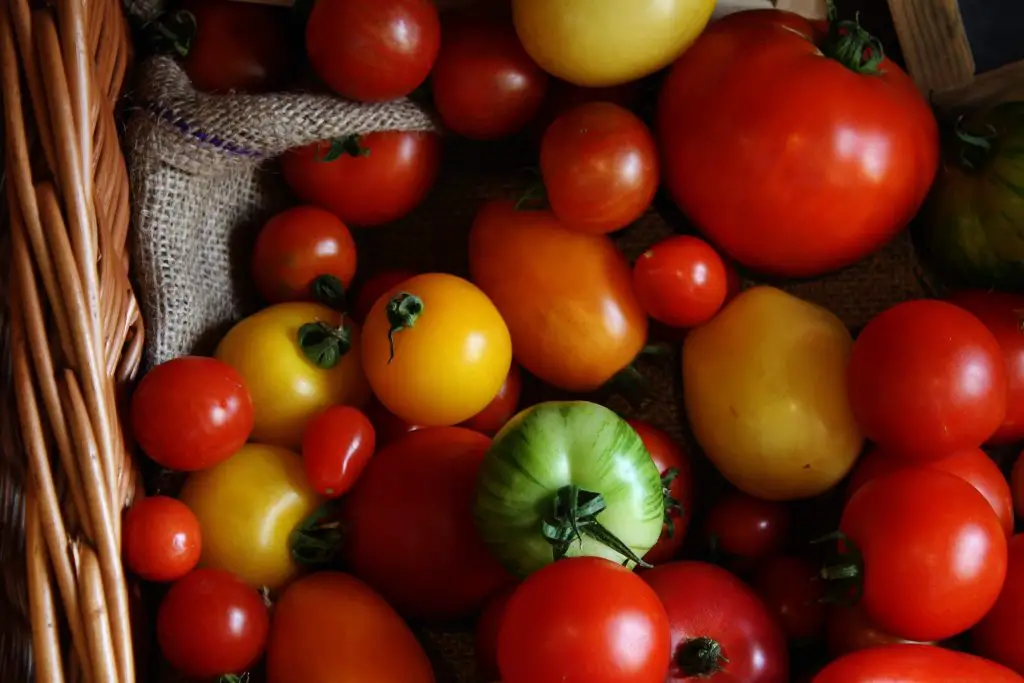
Affiliate Link Disclaimer
Some of the links here are affiliate links, and I may earn if you click on them, AT NO EXTRA cost to you. I hope you find the information here useful! Thanks!
Related Posts
- Can Tomatoes Grow In Clay Soil?
- How Cold Can Tomatoes Tolerate?[+Tips To Keep Them Juicy]
- What Is Eating My Tomatoes? [And How To Fix It!]
- How To Grow Tomatoes From Seeds Without Soil? 2022 Update
- Is Organic Compost A Fertilizer? + How To Use It Properly
- Using Neem Oil For Tomatoes: The Ultimate Guide [2023]
13 Best Disease Resistant Tomatoes Varieties
Fortunately, now several tomato varieties have some level of resistance to late blight and other diseases. Listed below includes some of the most disease resistant tomato plants for you to select from:
Blight Resistant Variety
1. Iron Lady
Produces a medium size round, red fruits, rated at 75 days to maturity, a determinate (bush) type
2. Plum Perfect
Medium size, dense, oblong tomatoes, commonly used to make tomato sauce, a determinate type
3. Brandywine
Large, round, meaty tomato, has a pink tone to them
4. Stellar
Large round tomatoes that are perfect for slicing
5. Mountain Magic
Produces large red cherry tomatoes, rated at 75 days to maturity, a vigorous indeterminate (cordon) type
6. Jasper
Bears trusses of red cherry tomatoes after 60 days after planting, tall indeterminate (cordon) type
7. Summer Sweetheart
Crack-resistant, heart-shaped red cherry tomato, reaches 70 days to maturity, an indeterminate type
Hardiest Tomato Plant Variety
8. Bush Early Girl
Red, round, deeply flavored tomato, a determinate (bushy) type
9. Sweet Tangerine
Orange skins, famously known to be incredibly sweet, reach maturity in 68 days, a determinate type
10. Fourth of July
Bright red tomatoes can be harvested after 49 days, an indeterminate type
11. Beef steak
A large red variety that weighs about a pound each, one of the most common type
12. Supertasty
Has a rich, tangy flavor, with a saturated deep red color, takes 70 days to reach maturity
13. Celebrity
Red tomato that is very round and full, weighs about a half pound a piece
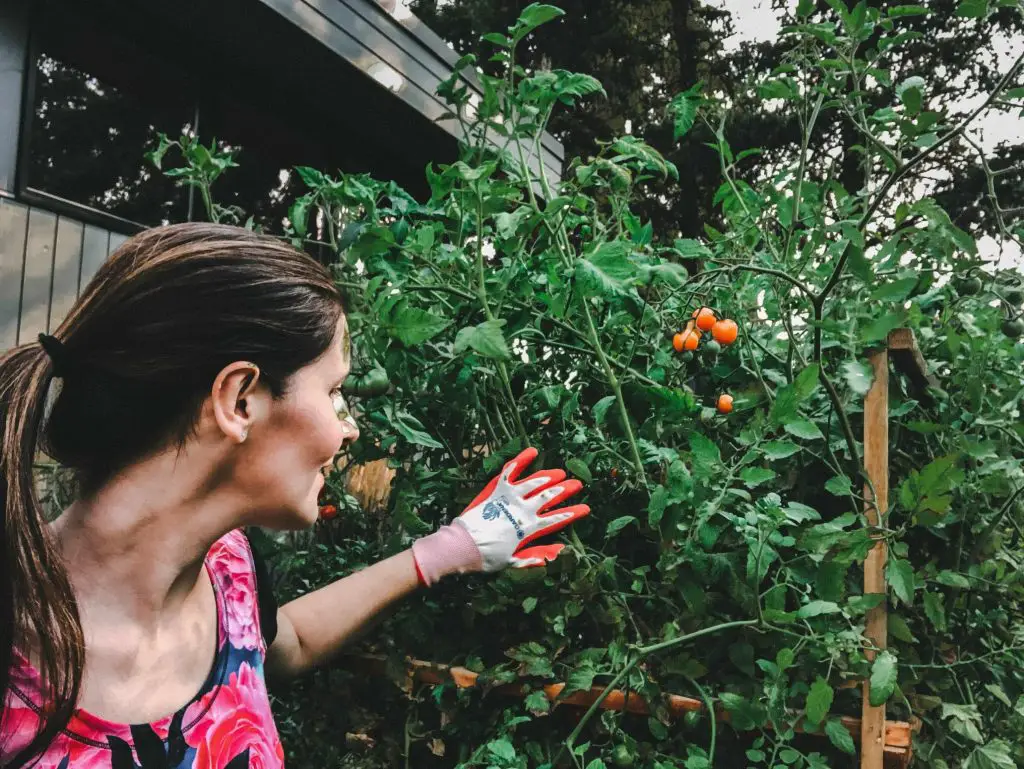
Understanding Disease Resistant Tomatoes
There are dozens, if not hundreds of diseases that can fall upon your tomato crops. Some are admittedly more common than others, but some are not.
With so many factors affecting the resistance levels of tomatoes, it is crucial to take some time to understand the plants that you’re about to crop to avoid attending to all these unnecessary tomato diseases.
Before you make any purchase of any tomato plant, memorizing the resistant codes can be overwhelming so be sure to check in with the supplier or seller if the breed you chose is a disease resistant type.
Do take note, however, that disease resistance doesn’t mean total immunity. Depending on your region’s climate, or your soil condition, even supposedly some of the best disease resistant tomatoes may well be prone to the diseases.
Read on to understand the types and steps that one should take to reduce tomato crop loss.
Selecting The Right Tomato Breed For Your Garden
One of the crucial steps before planting the seeds is to understand that even though there are a variety of disease-resistant tomatoes, some may not thrive well in your garden as opposed to someone else residing in another region.
For example, if you’re living in the eastern of United States, your tomatoes are prone to experience an early blight or septoria leaf spot diseases. The solution to these problems is to select tomato varieties that are resistant to these types of diseases.

A Quick Guide For Choosing A Tomato Breed
1. Accustom yourself to the resistant codes on the seed packages – There are some tips below with some of the general codings that you may find on the seed packages. A cool tip, bookmark this tab for your easy reference in the future!
2. Choose the best variety that suits your region – Choosing the disease resistant tomatoes is easy but there’s no guarantee that there’ll be no harm to them. At the end of the day, it’s best to select the best disease resistant tomatoes that suit your region.
3. Identify the vulnerabilities of your region – The most crucial step is to discern the common tomato diseases in your region. Ask around your neighbors who are green with their fingers or have a chat with any local nursery owners.
Or the easiest method would be to call up your local extension office to know which tomato diseases are often recorded by the local gardeners.
How to Choose Disease Resistant Tomatoes
One of the main objectives of these modern hybrid development programs is the production of disease resistant tomato varieties. Resistance does not equate to total immunity, hence why there have been no successful disease free tomatoes just yet.
Gardeners are encouraged to select blight resistant tomato seeds relevant to their gardens. To choose the best disease resistant tomatoes is to look on the seed packet or the plant label for the following codes:
AB – Alternarium Blight
A or AS – Alternarium Stem Canker
CRR – Corky Root Rot
EB – Early Blight
F – Fusarium Wilt; FF – Fusarium races 1 & 2; FFF – races 1, 2, & 3
FOR – Fusarium Crown and Root Rot
GLS – Gray Leaf Spot
LB – Late Blight
LM – Leaf Mold
N – Nematodes
PM – Powdery Mildew
S – Stemphylium Gray Leaf Spot
T or TMV – Tobacco Mosaic Virus
ToMV – Tomato Mosaic Virus
TSWV – Tomato Spotted Wilt Virus
V – Verticillium Wilt Virus
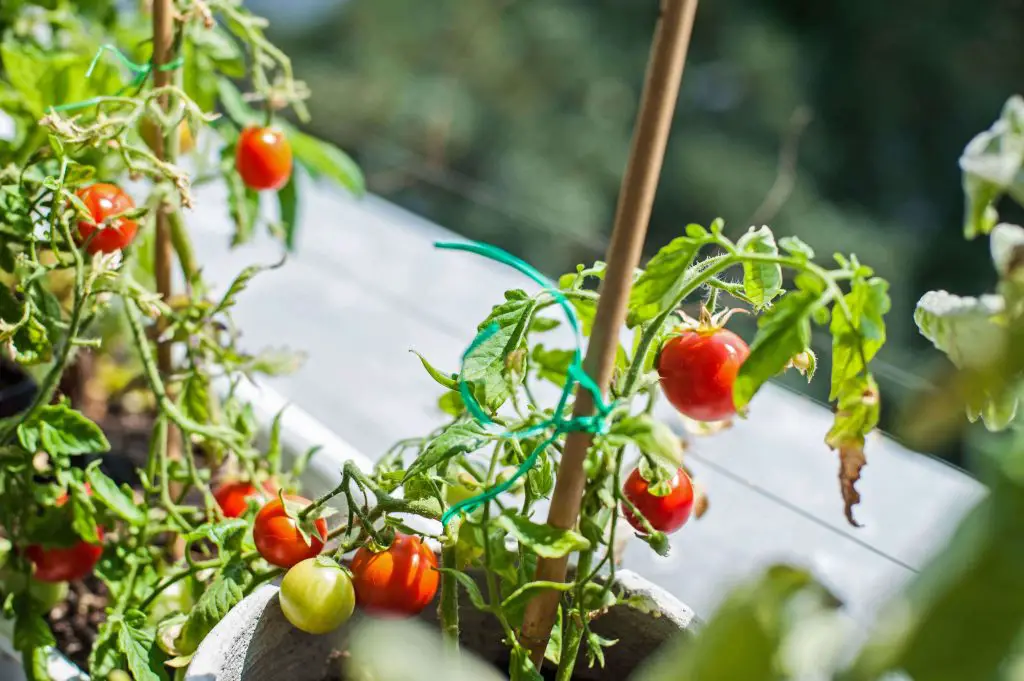
Types of Tomato Diseases
Understanding the various types of tomato diseases can give you an upper hand in saving your tomato plants from these common diseases listed below.
1. Early Blight
Early blight can affect the fruit of the tomatoes, the foliage and the stems.
Symptoms: The perimeter of the leaf may turn yellow and you’ll see dark spots with concentrated rings forming on the older leaves. This type of fungus only attacks after the plants set fruit.
Management: mulching, crop rotation, sanitation, fungicides, staking
2. Late Blight
Affects the stems, leaves and fruit of the tomatoes.
Symptoms: A ring of white mold can form around the spots in wet weather. They are often greasy looking and are irregularly shaped dark brown blotches with green gray edges. The spots will eventually turn dry and papery.
The stems may eventually have blackened areas and the fruit can turn mushy from a secondary bacterial infection.
Management: sanitation, fungicides, disease-free planting material
3. Southern Blight
Commonly manifests itself as a white mold growing near the soil line on the stem.
Symptoms: Both the outer and inner stem becomes discolored and that round, dark spot start to form on the lower stem near the soil. This type of fungus prevents the plant from soaking up any nutrients or water.
Management: fungicides, deep tiling, crop rotation
4. Septoria Leaf Spot
Often mistaken for a Late blight, it’s a fungal infection that only affects the leaves but not the fruit.
Symptoms: The infected area appears as small, dark spots that will grow into a ¼-inch diameter. It gradually changes into a tan or gray color, and the leaves will eventually wilt and fall.
Management: weed management, cultural practices, sanitation, fungicides, crop rotation
5. Anthracnose
A very common fungus that always targets the fruits that causes them to rot.
Symptoms: Small, sunken, round spots appear on the fruit. The spots gradually increase in size and darken in the center.
Several more spots may emerge as the size enlarges. Poorly drained soil and wet weather are the primary motivation for the development of anacthrose.
Management: cultural practices, fungicides, sanitation, crop rotation
6. Bacterial Speck
Can be difficult to control when favorable environmental conditions are present and when the disease pressure is high.
Symptoms: Small spots that are brown in the centre and have a yellow ring on the perimeter of the spot. They are usually small in size but if overlapped, they may appear larger and irregular in size.
This type of disease can spread to the fruit if early measures are not taken.
Management: seed treatment, sanitation, crop rotation, fungicides, cultural practices, pathogen-free seed
7. Blossom End Rot
Generally caused by a lack of calcium availability during the fruit set. Factors concerning the fungus presence may be due to too much high-nitrogen fertilizer or uneven watering. In short, it’s not a disease but a physiological disorder that will result in the loss of fruit.
Symptoms: Black/dark brown spots develop at the blossom end of the fruit and the spots look water-soaked.
Management: deep watering, crop rotation, cultural practices, sanitation
8. Verticillium Wilt
The name can be misleading as the leaves will never appear to wilt but will only be dried up and turned yellow.
Caused by a soil-borne fungus, which can persist in the soil for many years therefore a selection of resistant varieties and crop rotation is crucial.
Symptoms: The symptoms tend to start on the older, lower leaves and eventually move upward. You’ll spot yellow blotches that will eventually turn into brown dead spots. Verticillium wilt affects the production size of the fruits as it stunts the plant.
Management: sanitation, fumigation, crop rotation, resistance
9. Gray Wall
Essentially it’s a ripening complication as there are no known associated pathogens.
Symptoms: The appearance of ripe fruits may look mottled with the presence of green or brown areas inside the fruit. Green fruits may have a flattened, gray blotch or gray cast.
Management: seed treatment, sanitation, crop rotation, fungicides, cultural practices
Methods to Prevent Tomato Diseases
Now that you’re familiar with some variance of the best blight resistant tomatoes, you can now have a stress-free tomato crop.
However, don’t just solely rely on the seed varieties as some of the most disease resistant tomatoes may fail.
Soil structure, maintenance and environment play a vital contributing factor to your yield. Here are some preventive measures to protect your plantation:
2. Disinfect Tomato Tools
3. Fertilize
4. Minimize irrigation
5. Mulch
6. Prune out dense foliage
7. Remove Infected Leaves Immediately
8. Water at ground level
9. Water in the morning
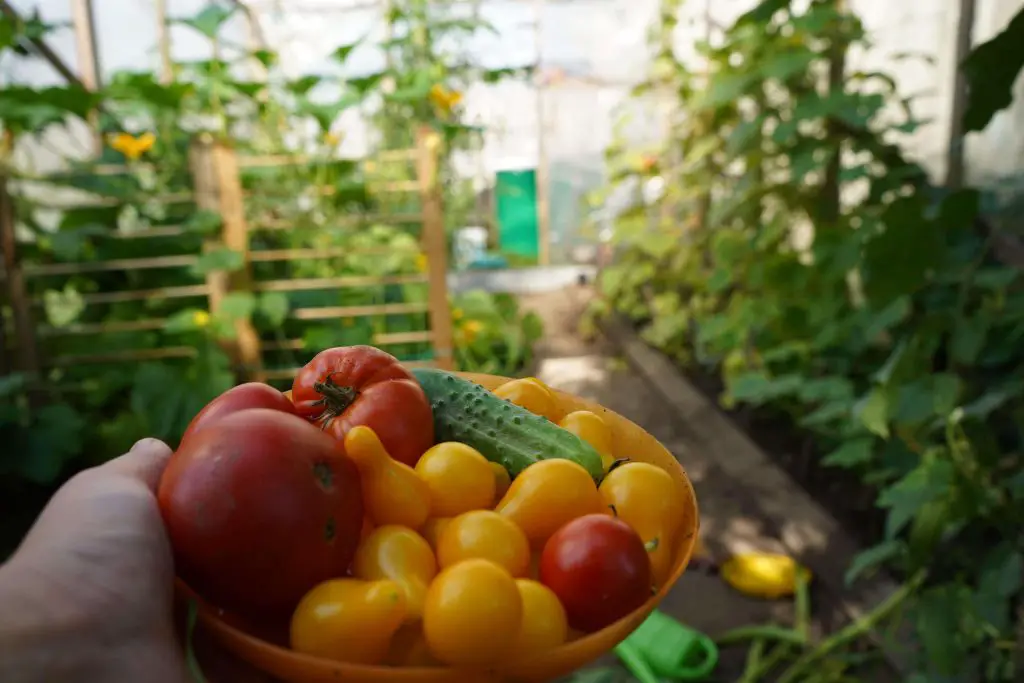
What Is A Good Disease Resistant Tomato Plant?
So, what is a good disease resistant tomato plant? ‘Plum perfect’, among a few others, is a good disease-resistant tomato plant as it has a broader disease resistance to all kinds of tomato complications. It has also been proven to be one of the most productive plants as it can bear up to 4-ounce of red tomatoes that are considered to be juicy and plump in texture.
What Is The Most Disease Resistant Cherry Tomato?
What is the most disease resistant cherry tomato? Some of the most disease-resistant cherry tomatoes include ‘Early Girl’, ‘Rutgers’, ‘Big Beef’, ‘Southern Star’, ‘Red Currant’ and ‘Cherry Tomato’. You’ll be spoiled with dozens of choices for you to choose from.
What Varieties Of Tomatoes Are Resistant To Blight?
Wondering what varieties of tomatoes are resistant to blight? The Mountain Magic, Plum Regal, Matt’s Wild Cherry, and Jasper are among the varieties of tomatoes that are resistant to blight. They are in no condition immune to early or late blight, but they do have stronger resilience which allows them to have a better prospect of nurturing a healthier crop.
What Tomatoes Are Resistant To Wilt?
What tomatoes are resistant to wilt? Apollo Improved, F1 – a tomato hybrid between two different plant varieties is deemed to be one of the tomato variants that are resistant to wilt. The fruit is much firmer and has the mild flavored acidic taste of the old Apollo.
Although it needs staking, its improved characteristics have allowed the fruit to be set at temperatures as low as 10 degrees celsius and be disease resistant to Bacterial Wilt and Root Knot Nematode.
Conclusion
In short, there are no magical seeds that are disease resistant free, but with the correct knowledge about finding the best disease resistant tomatoes, you’ll be saving a lot of time and hassle in maintenance.
Do not panic if you have already sowed any tomato seeds this summer. All hope is not lost as there are countless measures to prevent tomato diseases from happening.
By applying the preventive methods shared above, one could salvage the crop and harvest baskets of juicy plum tomatoes to be shared among your friends and family by the end of the season!
If you’re a tomato expert or have planted disease resistant tomatoes, we would love to hear your thoughts and experience on them!
Related Posts






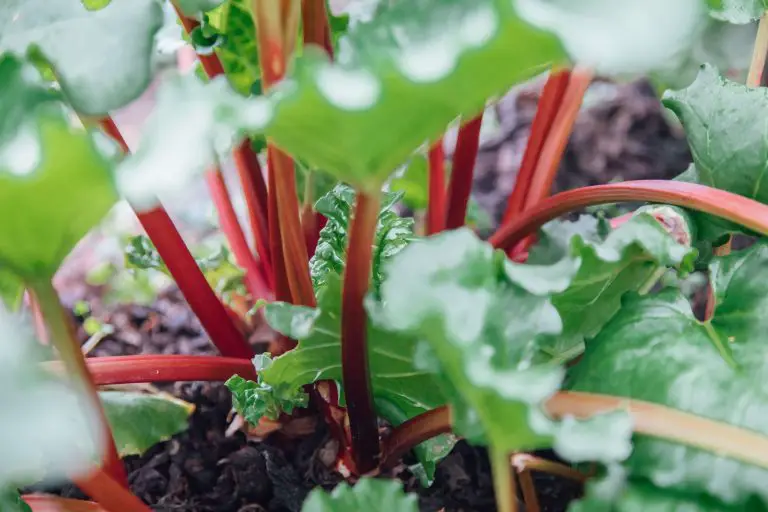
![What To Do With A Tree Stump In The Front Yard [Weird + Wonderful Ideas!]](https://aboveandbeyondgardening.com/wp-content/uploads/2021/10/What-to-do-with-tree-stump-in-front-yard-768x512.jpg)

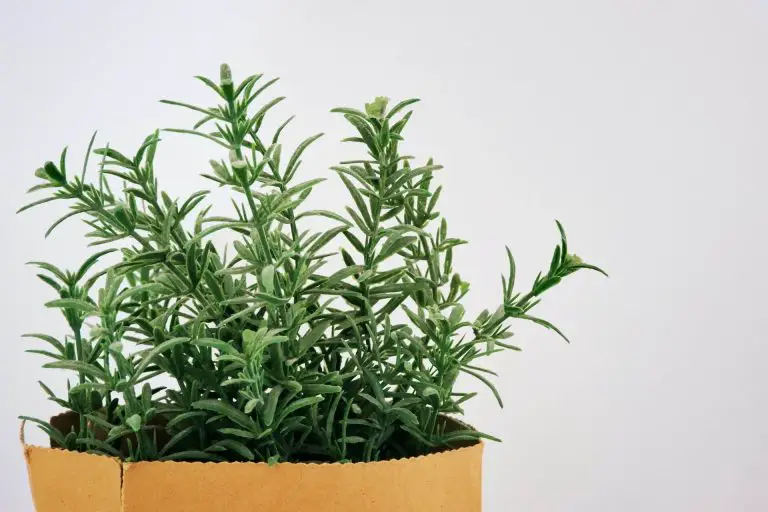
![How Long Does It Take To Grow Potatoes [Harvest The RIGHT Way]](https://aboveandbeyondgardening.com/wp-content/uploads/2021/10/How-Long-Does-It-Take-To-Grow-Potatoes-768x542.jpg)
![How To Harvest Kale Without Killing The Plant [What to Avoid!] 2023](https://aboveandbeyondgardening.com/wp-content/uploads/2022/10/how-to-harvest-kale-without-killing-the-plant-1-768x512.jpg)
